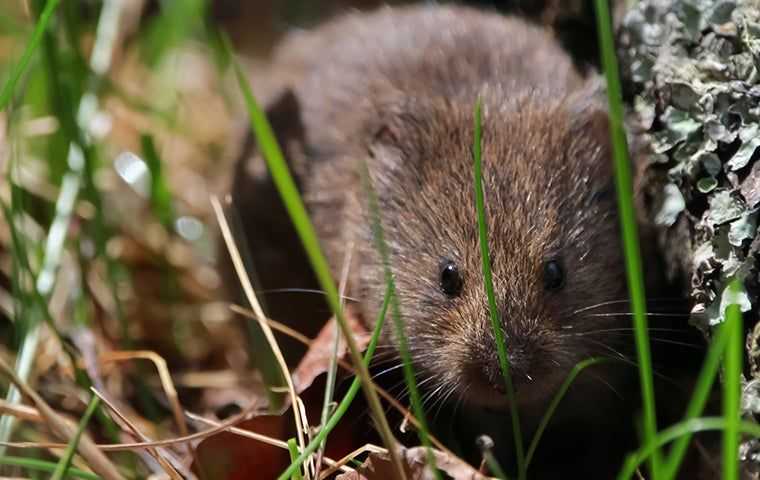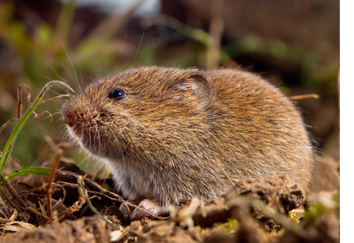Letting Loose the Power of Vole Parasite Control: Advanced Techniques for Problem Elimination and Therapy
As the persistence of vole problems proceeds to challenge homeowner and agricultural specialists alike, the pursuit for a lot more efficient and efficient insect control methods intensifies. In the world of vole administration, conventional approaches usually drop short in attaining long-lasting solutions. Nonetheless, recent advancements in bug control technology and strategies have opened up new methods for combating these elusive rats. By checking out advanced capturing techniques, critical exclusion techniques, eco-friendly repellents, and incorporated pest management remedies, an appealing perspective emerges in the fight against vole invasions.
Vole Pest Identification and Evaluation
Voles, little rats that look like computer mice yet have much shorter tails, are generally identified insects in gardens and lawns, needing complete analysis to determine the extent of their infestation. Identifying voles involves recognizing their distinct attributes, such as their stocky bodies, brief legs, and tiny eyes. They are typically around 3 to 9 inches long and can vary in shade from grey to brownish.
Examining vole infestations is important for carrying out efficient insect control techniques. Signs of vole presence consist of runways in grassy areas, harmed plant life, and little burrow openings near the surface. By examining these indications, homeowner can determine the extent of the invasion and develop appropriate eradication approaches.

Cutting-Edge Trapping Strategies
Efficient vole pest control requires remaining abreast of the current innovations in trapping methods to efficiently handle infestations in lawns and gardens. Typical methods like breeze traps and glue boards have their limitations, leading researchers and insect control specialists to develop more humane and efficient capturing techniques. One innovative strategy is the use of online catches that record voles without causing harm, enabling their risk-free elimination and launch in an ideal environment away from suburbs. These catches are made to decrease stress on the captured voles and are recyclable, making them cost-effective and environmentally friendly over time.
An additional cutting-edge trapping technique involves the usage of electronic catches that provide a quick and humane electric shock to eliminate voles instantly. These catches are made to be risk-free for use around pets and youngsters while supplying a highly efficient approach of vole control. Furthermore, some electronic catches are outfitted with sensors and remote monitoring capacities, making it possible for property owners to track vole task and catch status from a range, improving the overall performance of vole pest control initiatives. By integrating these advanced capturing methods right into insect management techniques, property owners can take on vole invasions with accuracy and empathy.

Strategic Exclusion Approaches
Implementing calculated exemption techniques is crucial in avoiding vole invasions and protecting gardens and lawns from damages triggered by these parasites. One effective technique is the installment of equipment cloth barriers. These barriers must be hidden a minimum of 12 inches deep and rise 6 inches in the air to stop voles from burrowing underneath or climbing over them. Furthermore, trimming about his hedges and trees to maintain a clear space between the plants and the ground can help in reducing vole sanctuary and concealing places.
One more essential exemption technique is the use of crushed rock or rock compost instead of natural compost. These entry factors must be sealed with products like concrete or metal blinking to prevent vole accessibility.
Eco-Friendly Repellents and Deterrents
Using eco-friendly repellents and deterrents is a sustainable approach to taking care of vole populations and minimizing damages to gardens and backyards. Green choices are gaining appeal due to their performance in pushing back voles without causing harm to the atmosphere, pets, or valuable wildlife. One usual see this website environmentally friendly approach is using all-natural vole repellents such as castor oil, garlic, or predator urine, which produce undesirable scents for voles, driving them away from dealt with areas.
One more green deterrent is the use of physical barriers like cord mesh or hardware cloth to secure vulnerable plants and bulbs from vole damages. These obstacles act as a safety net against vole invasion while permitting correct aeration and drainage in the soil.
In addition, introducing vole predators like owls or setting up nest boxes can assist normally control vole populaces in a yard or lawn. By encouraging natural predators, a balanced ecological community can be kept without the need for hazardous chemicals or traps. Generally, including green repellents and deterrents in vole pest control strategies promotes environmentally conscious and sustainable practices.
Integrated Insect Management Solutions
A holistic method to managing vole populations and mitigating damage in yards and gardens involves the comprehensive strategy of Integrated Parasite Monitoring Solutions. Integrated Bug Monitoring (IPM) integrates different techniques to address vole infestations properly while minimizing environmental impact. This approach incorporates organic, cultural, physical, and chemical control techniques to achieve lasting pest control.
One secret aspect of IPM is the focus on prevention. By executing measures such as environment adjustment, exclusion strategies, and preserving proper yard hygiene, property owners can create environments much less conducive to vole habitation. Additionally, biological controls, such as presenting all-natural predators or utilizing vole-resistant plant varieties, can help take care of vole populations without considering chemical treatments.
This lowers the overall chemical lots on the community while successfully taking care of vole populations. By embracing Integrated Parasite Management Solutions, property owners can accomplish lasting vole parasite control while promoting community wellness in their lawns and gardens.
Final Thought
In conclusion, the sophisticated techniques for vole parasite control reviewed in this write-up supply efficient solutions for invasion removal and treatment. These approaches provide an extensive strategy to vole bug control for long-term success.
As the perseverance of vole invasions continues to test residential property owners and farming experts alike, the quest for a lot more efficient and reliable insect control methods intensifies. Furthermore, some electronic traps are outfitted with sensors and remote surveillance abilities, making it possible for house owners to track vole activity and trap status from a range, boosting the general performance of vole insect control initiatives. One common eco-friendly method is utilizing all-natural vole read this repellents such as castor garlic, predator, or oil pee, which create undesirable scents for voles, driving them away from treated areas.
In addition, introducing vole predators like owls or mounting nest boxes can aid naturally control vole populations in a garden or backyard. By adopting Integrated Insect Administration Solutions, property owners can accomplish lasting vole parasite control while promoting community wellness in their gardens and yards.